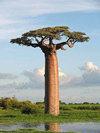欧洲植物园描述的北美一种蔷薇属植物(1789-1823)
IF 0.6
4区 生物学
Q4 PLANT SCIENCES
引用次数: 2
摘要
摘要18世纪和19世纪初,北美本土的野樱草被引入欧洲植物园,其中一些被描述为新种。在那个时代,对鲁布斯的了解有限,通常加上简短的描述,导致了许多不正确的解释,造成了许多混乱(特别是在北美)。我们建立了一个项目,通过审查类型和描述以及涉及现代收集的比较工作来澄清这些令人困惑的物种的身份。我们从早期欧洲花园收集的丛书中鉴定了7个假定的北美丛书种:R. villosus Aiton, R. vulpinus Poir。, R.宾夕法尼亚。;;;;r.r . inermis Willd。,异叶草。和R. argutus Link,以及早期欧洲植物学文献中其他四个可能起源于北美的名字:R. decumbens Thunb。, r.m inmis Thunb。r.s enenii Tratt。和R. floridus Tratt。我们肯定了鞭毛毛鼠、白毛鼠和黄毛鼠的应用现状。长卷毛鼠与leviculus L.H. Bailey相同,而长卷毛鼠在19世纪被广泛应用的分类群是R. allegheniensis Porter,似乎与R. vulpinus相同。野蔷薇。被确认为白桦尺蠖的早期名称。野蔷薇。与R. ulmifolius Schott相同,一定起源于旧大陆。Thunberg的另一种美洲红蝽,R. decumbens,可以被鉴定为R. arundelanus Blanch。花楸属植物仍然是一个谜。如果它的类型代表了一个大的,堆积的露莓的一个确定的开花分支的样本,它是最接近R. grimesii L.H.贝利,但它也可能是从一个未知的直立黑莓的侧枝上取下来的。另一个不能确定身份的名字是R. pensilvanicus。它与阿勒gheniensis有亲缘关系,但其类型不足以确定它是该物种的一个极端形式,一个相关分类群,还是它与Arguti (Rydb)剖面的一个物种的杂交。贝利L.H.。我们建议将伞生到弱总状的Arguti命名为R. revealii sp. 11 .(以前被认为是R. pensilvanicus sensu L.H. Bailey)。本文选择abactus L.H. Bailey, r.r arundelanus, r.r decumbens, r.r grimesii, r.r inermis Thunb。(L.H. Bailey) Britton和vulpinus,并指定了argutus和heterophyllus的新型。本文章由计算机程序翻译,如有差异,请以英文原文为准。
North American species of Rubus L. (Rosaceae) described from European botanical gardens (1789-1823)
ABSTRACT Native Rubus were brought from North America to European botanical gardens in the 18th and early 19th centuries, and some were described as new species. Limited knowledge of Rubus in that era, typically combined with brief descriptions, led to many incorrect interpretations, causing much confusion (especially in North America). We established a project to clarify the identity of these confusing species by reviewing types and descriptions along with comparative work involving modern collections. We identified seven putative North American Rubus species named from early European garden collections: R. villosus Aiton, R. vulpinus Poir., R. pensilvanicus Poir., R. flagellaris Willd., R. inermis Willd., R. heterophyllus Willd., and R. argutus Link, and four other names in the early European botanical literature of possible North American origin: R. decumbens Thunb., R. inermis Thunb., R. enslenii Tratt., and R. floridus Tratt. We affirmed the current applications of R. flagellaris, R. argutus, and R. enslenii. Rubus villosus is identical with R. leviculus L.H. Bailey, while the taxon to which R. villosus was generally applied in the 19th century, R. allegheniensis Porter, appears to be identical with R. vulpinus. Rubus heterophyllus Willd. was identified as an earlier name for R. plicatifolius Blanch. Rubus inermis Willd. is identical with R. ulmifolius Schott and must have originated in the Old World. Thunberg's other American Rubus, R. decumbens, can be identified as R. arundelanus Blanch. Rubus floridus remains a puzzle. If its type represents a sample of a determinate flowering branch from a large, mounding dewberry, it is closest to R. grimesii L.H. Bailey, but it could also have been taken from a side-branch from an unknown upright blackberry. Another name for which identity could not be definitively established is R. pensilvanicus. It is allied with R. allegheniensis, but its type is insufficient to determine if it is an extreme form of that species, a related taxon, or a hybrid of it with a species of section Arguti (Rydb.) L.H. Bailey. We propose the name, R. revealii sp. nov. for the corymbose to weakly racemose Arguti previously considered as R. pensilvanicus sensu L.H. Bailey. Herein, we lectotypify R. abactus L.H. Bailey, R. arundelanus, R. decumbens, R. grimesii, R. inermis Thunb., R. invisus (L.H. Bailey) Britton, and R. vulpinus, and designate neotypes for R. argutus and R. heterophyllus.
求助全文
通过发布文献求助,成功后即可免费获取论文全文。
去求助
来源期刊

Adansonia
生物-植物科学
CiteScore
1.30
自引率
12.50%
发文量
24
审稿时长
>12 weeks
期刊介绍:
Adansonia is a fast-track and peer-reviewed journal of plant biology, devoted to the inventory, analysis and interpretation of vascular plants biodiversity. It publishes original results, in French or English, of botanical research, particularly in systematics and related fields: morphology, anatomy, biology, ecology, phylogeny, biogeography, etc. All articles published in Adansonia are compliant with the different nomenclatural codes. A copyright assignment will be signed by the authors before publication.
 求助内容:
求助内容: 应助结果提醒方式:
应助结果提醒方式:


